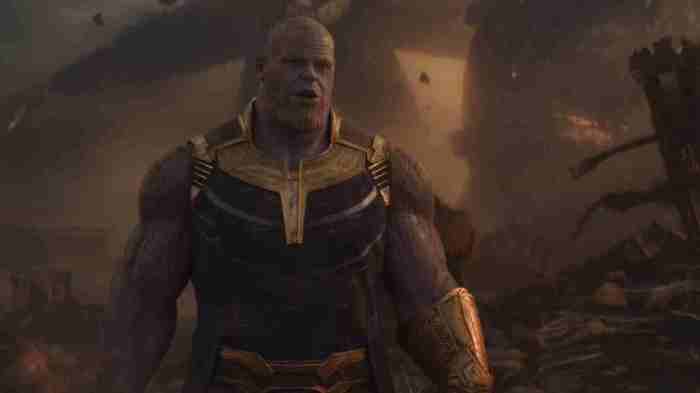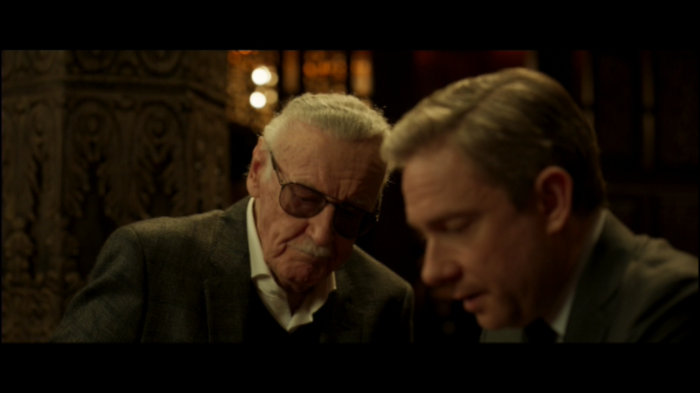
Spoiler warning: these reviews reveal plot twists.
Scott Lang is under house arrest, but must leap into action when old pals Hank and Hope need help finding a long-lost loved one…
By the mid 1980s, Christopher Reeve had played Superman in three successful movies. For the fourth instalment, he was given an opportunity to develop the story himself and he hit upon the idea of Superman tackling the world’s growing proliferation of nuclear weapons. He then went to Tom Mankiewicz, the writer of the first two films, for some advice… and Mankiewicz told him to avoid the issue like it were Kryptonite. If Superman can solve the Cold War, he argued, then surely he can do anything. As a story idea, it just opened up too many cans of worms. Why doesn’t the Man of Steel cure cancer, then? Why doesn’t he solve world hunger? Why doesn’t he stop every rapist?
In the event, the advice was ignored – and we ended up with the rotten Superman IV: The Quest for Peace. But Mankiewicz had a point. Superheroes are not real. They don’t fit well into the real world. Superhero films need to construct a context for their stories – one where, for example, it’s plausible that an all-powerful character such as Superman could have obstacles to overcome. But in Ant-Man and the Wasp, the desire to have some fun results in a film where you constantly ask, ‘If they can do *that*, why don’t they just…?’
It’s been a couple of years since we last checked in with Scott Lang (Paul Rudd), the ex-con who became the miniaturising superhero Ant-Man in his debut film. He’s under house arrest after an unauthorised sojourn to Germany in Captain America: Civil War, but is having fun visits from his young daughter and is also setting up a security business with his pals. Meanwhile, his old cohorts Hank Pym (Michael Douglas) and Hope van Dyne (Evangeline Lilly) are attempting to develop technology that will allow them to locate Hope’s mother, Janet. She was lost in the quantum realm when she shrank down dangerously small 30 years earlier. Oh, and Hope has become a superhero herself: she has her own miniaturising suit – complete with wings and blasters – and is known as the Wasp. (She’s therefore the first woman mentioned specifically in the title of an MCU movie. It’s taken 20 films.)
Hank and Hope’s quest means doing a shady deal with a rent-a-complication bad guy called Sonny Burch (Walton Goggins). They need to acquire some vital equipment for their Death Star-like quantum tunnel – a device that will shrink them small enough to find the infinitesimally small Janet. And here’s just one instance of ‘Why don’t they just…?’ Hope can reduce herself to the size of a wasp. She has a gizmo that means she can change the size of other things too – cars, salt cellars, entire buildings and all their contents – so where is the suspense meant to be when Burch reneges on the deal? Can’t she just buzz in, shrink the equipment and buzz off without anyone knowing?
Anyway, when the deal goes south, a fight breaks out – and Hope and Burch’s goons are not the only ones involved. A mysterious character referred to as Ghost shows up and is determined to claim the equipment for herself. (Ghost is patently a woman, though at first Hope and Hank assume she’s a man for some reason.) Covered in a mushroom-grey bodysuit that brings to mind tardigrades, bizarre micro-animals that grow to just half a millimetre in size, she steals the MacGuffin and legs it. We then learn that she’s Ava Starr (Hannah John-Kamen), a young woman who – due to an scientific accident when she was a child – is constantly phasing in and out of reality. She’s being helped by an old pal of her father’s, Bill Foster (Laurence Fishburne, previously Perry White in the rival DC series of movies).
With the pieces now in place, the ‘plot’ becomes a succession of chase sequences as various characters attempt to gain control of Hank’s lab, which has been shrunk down to the size of suitcase. Some of them are fun, such as a comedic sequence at a school that sees Scott inconveniently stuck at either half or twice his normal size. (After her time in the Hobbit films, Evangeline Lilly has form for playing opposite actors being artificially sized up or down by CGI. The film also wisely ignores any fetish subtext of her appearing half the size of Paul Rudd.) But there are a large number of plot holes, which become more and more difficult to ignore.
The biggest comes when Hank, Hope and Scott manage to send Hank down into the quantum realm and he finally locates his long-lost wife. Janet is played by silver vixen Michelle Pfeiffer, but no attempt is made to explain how she’s survived in a desolate micro-world for 30 years. What has she been eating? Drinking? Using for moisturiser? Why hasn’t she gone insane after three decades with no human contact or external stimuli? Perhaps, having been Catwoman in a different superhero series, she’s got more than one life to play with.
Another disappointment is the drearily orthodox filmmaking. Maybe this is like criticising a four-door family salon for not being a sportscar, but Ant-Man and the Wasp is very bland cinema. Scene after scene plays out in boring medium shots and over-the-shoulder cutting. There’s no distinction or panache to anything, no visual storytelling (which is even more of a shame when you notice that the cinematographer is Dante Spinotti, who shot Heat and LA Confidential). All the movement, drama and emphasis comes from the never-ending editing. It’s by no means unique to this film, it must be said: it’s the MCU house style.
But despite these problems, this is still a zippy, enjoyable – if disposable – couple of hours. Paul Rudd is charming, funny and likeable. Evangeline Lilly is excellent, providing both sass and heart. There are some good jokes, including a few meta-gags that poke fun at the film’s clichés. Michael Peña is good value as Scott’s mate Luis, even getting a reprise of his fast-talking montage from the first Ant-Man film. And of course there’s the general Marvel sheen to everything. But it’s doubtful it’ll linger long in the memory.
Six men who miss the 1960s out of 10




